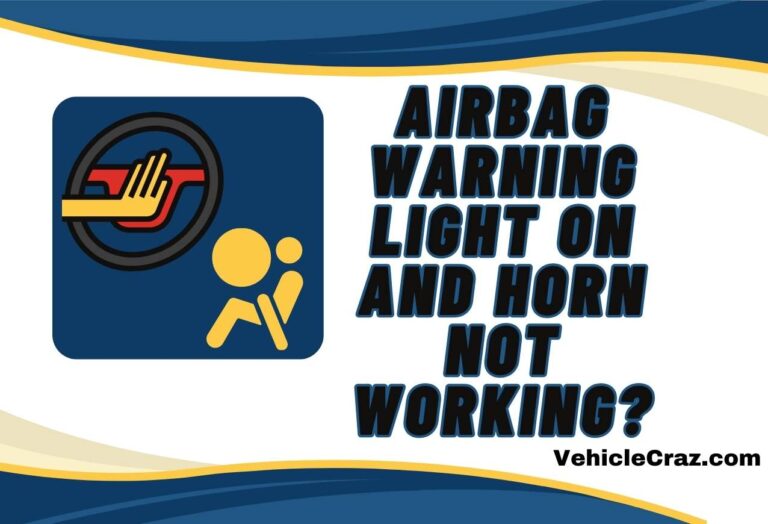How Does Windshield Height Impact a Driver’s Line of Sight?
When it comes to vehicle safety and driving comfort, the design of your windshield plays a pivotal role. One of the most critical aspects of windshield design is its height. So how does windshield height impact a driver’s line of sight? This article is all about this important subject.
How Does Windshield Height Affect a Driver’s Line of Sight?
Windshield height plays a crucial role in determining a driver’s line of sight, directly impacting their overall safety and driving experience. Here’s a comprehensive look at how windshield height influences visibility:
Field of Vision
The height of a windshield affects the driver’s field of vision. A higher windshield typically provides a broader view of the road, allowing drivers to see more of what’s ahead and to the sides. This can be particularly beneficial in identifying potential hazards or obstacles earlier, contributing to safer driving practices.
Blind Spots and Peripheral Vision
Windshields that are positioned higher can reduce the size of blind spots and improve peripheral vision. By extending the upper boundary of the driver’s view, a higher windshield helps in monitoring vehicles and objects approaching from the side, enhancing overall awareness and reducing the risk of accidents.
Driving Comfort
A higher windshield often leads to a more comfortable driving experience. It provides a better view of the road and traffic signals, which can be particularly useful in urban environments or during complex driving maneuvers. This improved visibility can help in making quicker and more informed driving decisions.
Obstructed Views
Conversely, a windshield that is too high might cause issues such as glare from the sun or reflections from the dashboard. Additionally, it might create a “fishbowl” effect, where the driver feels too enclosed, which can be disorienting. Therefore, the height must strike a balance between adequate visibility and comfort.
Vehicle Design and Aerodynamics
The design and height of the windshield are often influenced by the vehicle’s overall aerodynamic profile. A higher windshield might affect the car’s aerodynamics, potentially leading to increased drag. However, modern vehicle designs often account for these factors to ensure both safety and efficiency.
Safety Standards
Vehicle manufacturers adhere to specific safety regulations that dictate acceptable windshield heights. These standards are designed to ensure that windshields provide adequate visibility while meeting safety criteria. Understanding these regulations can help drivers and vehicle owners make informed decisions regarding windshield replacement or upgrades.
Related: Water Leaks into the Vehicle Through the Windshield?
How Can Drivers Adjust to Windshield Height Differences?
Adapting to differences in windshield height is essential for maintaining optimal visibility and ensuring a comfortable driving experience. Here are some strategies drivers can use to adjust to varying windshield heights:
Proper Seat Adjustment
Most vehicles have adjustable seats that can be raised or lowered. Adjusting the seat height can help align your line of sight with the windshield. For a higher windshield, raising the seat can enhance visibility, while lowering it may be beneficial for a lower windshield.
Move the seat forward or backward to achieve the best view through the windshield. Ensure that you have a clear view of the road and can comfortably reach the controls without straining.
Adjusting the Steering Wheel
Many vehicles come with adjustable steering wheels that can tilt or telescope. Adjusting the steering wheel to a comfortable position can help you maintain a clear view of the road and dashboard without obstruction from the windshield frame.
Mirrors Positioning
Ensure that the rearview mirror is properly adjusted to minimize blind spots and provide a clear view of the rear of the vehicle. For higher windshields, you might need to adjust the mirror slightly to account for the increased height.
Properly adjust side mirrors to cover blind spots and ensure that the view is not obstructed by the windshield pillars. Make sure they are set to provide a comprehensive view of the surroundings.
Headrest Position
The height of the headrest can also influence your driving posture and visibility. Ensure that the headrest is positioned correctly to support your head while not obstructing the view through the windshield.
Consider Windshield Tint and Add-Ons
Windshield tinting can reduce glare and improve visibility, especially with higher windshields that may cause increased glare from the sun. Ensure that any tinting adheres to local regulations.
Use sun visors effectively to block direct sunlight and reduce glare. For high windshields, adjust the visor to cover the areas where sunlight may impact visibility.
Related: How Does the Design of a Windshield Affect Defrosting Efficiency?
Regular Windshield Cleaning
Regularly clean the windshield inside and out to prevent smudges, dirt, and grime that can obscure visibility. Use appropriate cleaning solutions and avoid streaks that can affect your view.
Vehicle Maintenance and Inspection
Ensure that the windshield is properly aligned and free from damage that could affect visibility. Any issues with alignment should be addressed by a professional to maintain optimal line of sight.
Regularly inspect for any obstructions or issues with windshield wipers, defrosters, or other components that could impact visibility.
Driver’s Posture
Sit comfortably with your back against the seat and maintain a clear and upright posture. Proper posture helps in better alignment with the windshield and improves overall visibility.
Conclusion


I’m Alex, a seasoned mechanical teacher with over 20 years of hands-on experience in Australia. My passion for all things automotive has driven me to establish this blog, aiming to share my wealth of knowledge and expertise with fellow enthusiasts, DIYers, and anyone keen on understanding the mechanics behind the machines we rely on daily.







